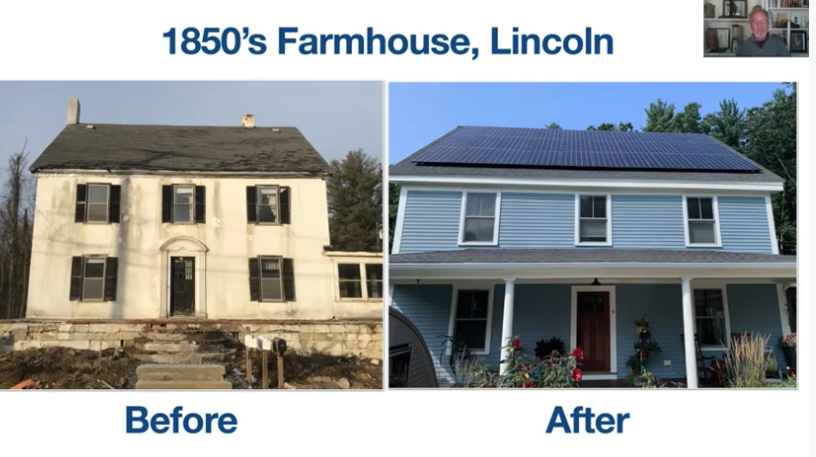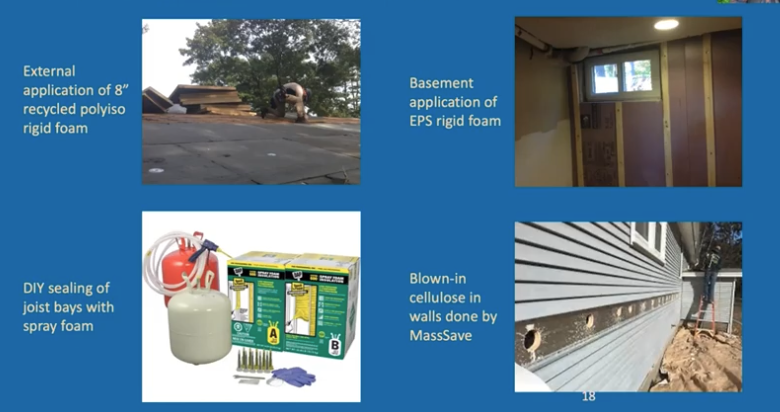Green Building Community
Home Improvement in a Warming World: Case Studies in Creating a More Energy-Efficient House (Recorded: Available On Demand)
Posted by: Rate It Green Team
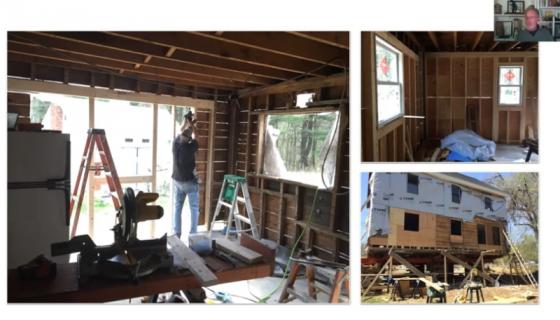
Recently, three homeowners walked through their home energy retrofit experiences as part of a compelling MetroWest Climate Solutions Presentation about reducing fossil fuel consumption and decarbonizing buildings. Our team at Rate It Green was super excited to see people taking the time to document and share what they had done and lessons learned in such fantastic and almost expert level detail. Those who haven’t undertaken significant energy retrofits or who haven’t taken on these particular projects can better follow down the learning curve if those who have pioneered ahead make this time to share what they know.
Thanks to MetroWest Climate Solutions for making these presentations publicly available, and also a huge thanks to the individuals who shared their goals, lessons learned, and expertise. We’ll briefly outline the topics here, but you are going to want to watch the full recording of this event!
Recorded Webinar: Home Improvement in a Warming World: Case Studies in Creating a More Energy-Efficient House
Recorded: November 16, 2021
Speakers:
- Jeff Barz-Snell, Moderator
- Roger Wiegand, Wayland, Massachusetts
- Bill Churchill, Lincoln, Massachusetts
- Sarah Maas Scheuplein, Weston, Massachusetts
Roger Wiegand:
All About Insulation (and Air Sealing)
Roger Wiegand starts off the event by sharing two home energy projects at different price points. According to Roger, the goal for both projects was to increase both energy efficiency and comfort, which fortunately seem to go hand in hand. Also, according to Roger, “It’s all about insulation” (and air sealing). Roger points out that it’s better to stop heat from moving where we don’t want it than to create heat by burning fuel or leveraging equipment to pump air around. It’s preferable to seal and insulate well, and thereby prevent hot air from coming in in the summer, or cold air coming inside in the winter. Thinking long term, Roger points out that air sealing and insulation are both durable actions, and sensible investments.
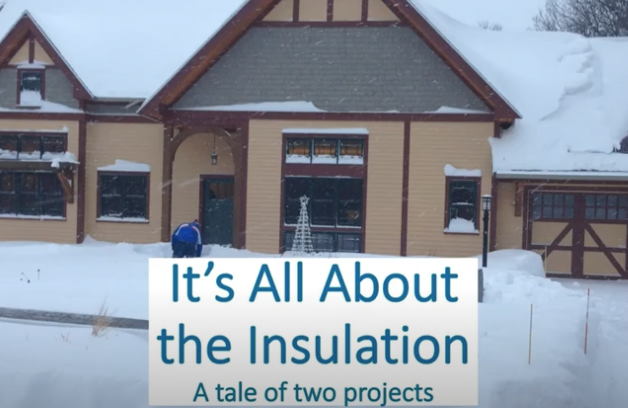
Roger’s first project is a retrofit of an existing 1950’s Garrison colonial home as well as an addition. This is a project designed to be a forever home, with an eye on adaptability for reduced mobility in the future. This house started as a leaky building with substantial deferred maintenance and minimal insulation, not well oriented for passive solar gains. For the addition, Roger used panelized construction to minimize waste and for project efficiency. Roger added a continuous insulation layer outside of the panels to block thermal bridging, and also added a rain screen to allow moisture to dry out and escape, and not enter the building. As the home became much tighter in terms of air circulation during the project and because there are still fossil fuel combustion appliances inside the home, Roger added mechanical ventilation in the form of an ERV or energy recovery ventilator, to ensure adequate fresh air without losing heat (that’s the “recovery part.” See Whole House Energy Recovery Ventilators (ERVs) Explained, by Panasonic) for more information on how ERVs work.) Roger was pleased to report that the gas company report confirmed he’s now using 1/3 the typical energy of a house of this size and shape.
For Roger’s second project, a 1962 tract home also with significant deferred maintenance (and some failed mechanical systems) and almost no insulation, keeping the budget tight was a significant goal. Due to roof accessibility issues, a key part of this project was to apply recycled commercial rigid foam roofing (10% of the cost of new materials) to the exterior of the roof. Roger and his family also used spray foam in the joist bays, applied EPS rigid foam in the basement, and had blown-in cellulose applied in the walls by the MassSave program. Additionally, they installed new, more efficient appliances and windows, and they replaced the exterior doors with insulated, weather-stripped doors.
In discussing his projects, Roger shares additional details as well as some key lessons learned and what he might do differently next time, or even in the future. He also shares information about the materials used for each project.
Bill Churchill
1850’s Farmhouse
Everyone including Bill seemed to think he should tear down his farmhouse when he first saw it for sale, but he decided to move and renovate the building instead. Interestingly, one of the reasons the house was in good condition was a lack of insulation - as it had been able to dry out easily in the past. But to bring the house to current energy efficiency standards and insulate, a layer of stucco had to be removed. Bill and his team spend considerable effort making sure the house was properly sealed, including using blower door tests, and Bill points out that it’s worth worrying about infiltration and holes more than some people assume, as leaks really undo the benefit of insulation. Like Roger, Bill used several types of insulation for different applications, including spray foam, rigid foam, and blown-in cellulose. For a carriage house on the property, Bill also applied thermal paint.
Bill also affirms Roger’s note about fresh air exchange when tightening up building enclosures. Roger also discusses insulating the attic to prevent heat loss, especially if the mechanical equipment will be located there. As for windows, Bill reviews the debate about replacing windows in historic homes and notes that many people are choosing to preserve the historic look if possible and use interior storm screens for efficiency. Bill also discusses knowing what your goals are when pecking windows - light and proper sealing were key for the carriage house’s three-season porch.
Bill discusses the fact that if a building is sealed and insulated properly, then the heating system has to do significantly less work. So, while there are more and more energy efficiency systems available, it’s still better and more cost effective to demand less from them.
Sarah Maas Scheuplein
Oil to Geothermal Heating/Cooling System Conversion
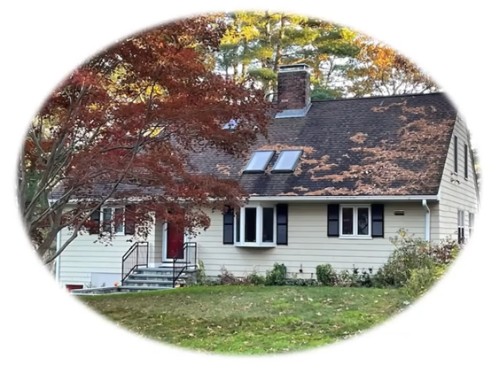
Sarah’s project captured our attention for a few reasons, one of which is that there is often advice to focus geothermal efforts on new construction and not on retrofits, as it’s a little easier to install geothermal on a property already undergoing significant disruption. Sarah shows how a successful geothermal conversion can look and work, and her example is likely a great inspiration for more of us to follow.
Sarah’s 1950's 2500 sf cape had been well maintained, but the oil systems instaled in 2004 were nearing the end of their lifespan, and first the cooling and then also the heating did not work well on their second floor. Sarah and her family planned to stay in the home for some time and recognized that they were in a position to make some big changes, for comfort and lifestyle, but also for the environment, to reduce emissions and maybe even eliminate fossil fuels all together.
Sarah walks through the difference between air source and ground source (geothermal) heat pumps, and why ground source seemed a better fit for her project, including how geothermal heating and cooling work (see below). Among other benefits, the ground source system would allow her to eliminate her old oil system completely, where an air source system might still require some existing equipment to remain as a back up. Additionally, the air source system would have some outside elements that could be vulnerable to extreme temperatures. This is not the case with ground source equipment, which operated in an underground environment with a consistent temperature. Both systems are extremely energy efficient, sometimes literally 400% more efficient than standard fossil-fuel heating and cooling systems.
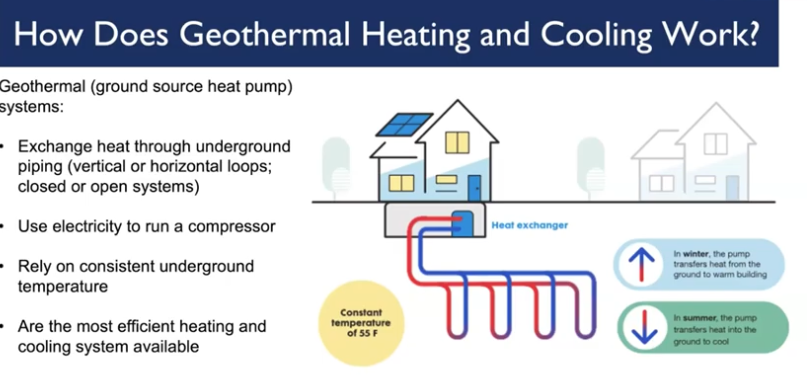
Drawbacks to geothermal include a longer installation process and up front higher costs. Sarah walks though the costs and shows how much federal and state rebates and credits impacted the final total (current rebates might be different - check MassSave or other sources, like DSIRE - Database of State Incentives for Renewables & Efficiency - for more information). She also documented the installation process - not for the faint of heart! When all is said and done, it’s been reported that people can save 40-70% on energy expenses with geothermal systems, and Sarah shares both a somewhat typical case and data from her own house. Sarah talks about the geothermal impacts, and also benefits from insulation she and her family added, as well as the installation of a solar system. Not only is Sarah seeing a reduction from oil costs, but her family also maintains a higher temperature in the home, particularly at night when they used to lower the temperature (there’s no need to do the with geothermal heating).
Sara includes such great and educational information beyond what’s shared here as well as some terrific slides, so it’s well worth watching her presentation!
Before this event concluded, Bradley Hubbard-Nelson gave a quick introduction to the HeatSmart Alliance, a group formed of volunteers from 15+ Boston-area communities that helps people assess whether their homes are good candidates for heat pumps.
About MetroWest Climate Solutions:
MetroWest Climate Solutions is a local partnership of Massachusetts organizations and congregations including First Parish in Wayland, First Parish Church in Weston, First Parish in Lincoln, the Congregational Church of Weston, Sustainable Weston Action Group, and a growing list of community groups and individuals. MetroWest Climate Solutions’ mission is to inspire sustainable, resilient and equitable communities and host timely and relevant programs that encourage people and organizations to get involved in bringing about solutions.
Please be kind and respectful!
Please make sure to be respectful of the organizations and companies, and other Rate It Green members that make up our community. We welcome praise and advice and even criticism but all posted content and ratings should be constructive in nature. For guidance on what constitutes suitable content on the Rate It Green site, please refer to the User Agreement and Site Rules.
The opinions, comments, ratings and all content posted by member on the Rate It Green website are the comments and opinions of the individual members who posts them only and do not necessarily reflect the views or policies or policies of Rate It Green. Rate It Green Team Members will monitor posted content for unsuitable content, but we also ask for the participation of community members in helping to keep the site a comfortable and open public forum of ideas. Please email all questions and concerns to admin@rateitgreen.com


